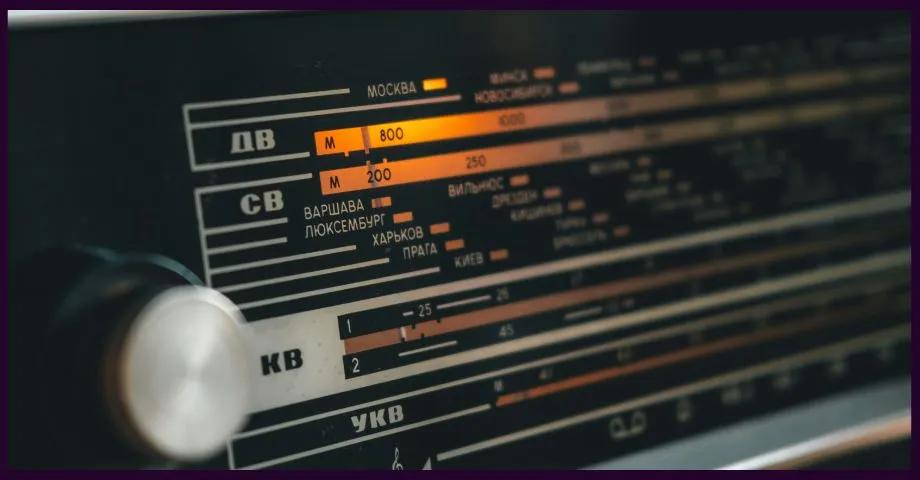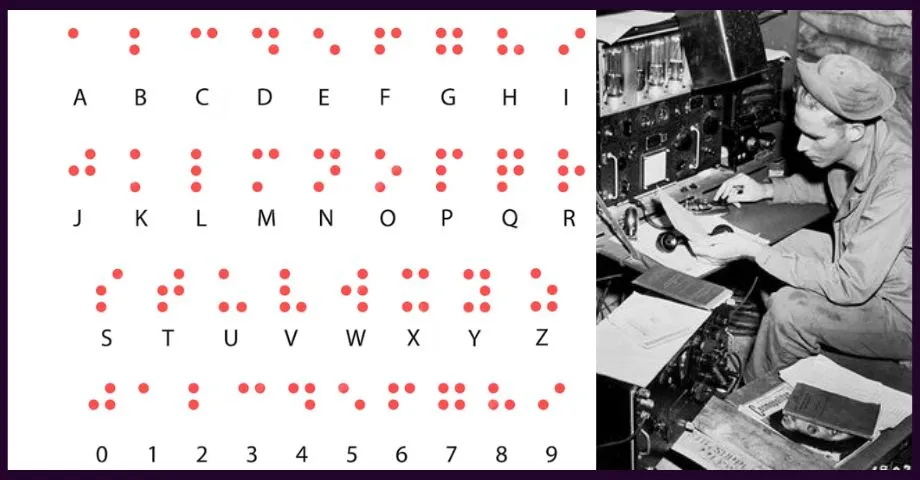Amateur radio, commonly known as “ham radio,” is a captivating hobby that has captivated enthusiasts for decades. At the heart of this fascinating pursuit lies the intricate world of radio frequencies, where hams navigate a vast spectrum of bands to communicate with fellow operators across the globe. In this comprehensive article, we’ll delve into the realm of ham radio band frequencies, exploring their characteristics, regulations, and the exciting opportunities they offer.
Laying the Groundwork: Understanding Radio Frequencies
Before we dive into the specifics of ham radio bands, it’s essential to understand the fundamental concepts of radio frequencies and the electromagnetic spectrum.
Radio waves are a form of electromagnetic radiation, occupying a particular portion of the electromagnetic spectrum. This spectrum encompasses a wide range of frequencies, from low-frequency radio waves to high-frequency gamma rays. Each frequency band has unique properties and characteristics, making it suitable for various applications, including communications, broadcasting, and scientific research.
In the context of ham radio, radio frequencies play a crucial role in enabling long-distance communication. Different frequencies exhibit varying propagation characteristics, which determine how far and under what conditions the radio signals can travel. By leveraging the right frequency bands, ham radio operators can establish contacts with fellow enthusiasts across towns, countries, or even continents.
The Amateur Radio Frequency Bands
Amateur radio operators are granted access to a series of designated frequency bands, which are carefully regulated and allocated by international and national authorities. These bands are divided into different segments, each with its unique characteristics and propagation properties.
High Frequency (HF) Bands
The High Frequency (HF) bands, often referred to as the “shortwave” bands, are among the most popular and widely used by ham radio operators. These bands span frequencies ranging from 3 MHz to 30 MHz and are renowned for their ability to facilitate long-distance communication, even global propagation under favorable conditions.
Some of the key HF bands include:
- 80 meters (3.5 MHz – 4.0 MHz)
- 40 meters (7.0 MHz – 7.3 MHz)
- 20 meters (14.0 MHz – 14.35 MHz)
- 15 meters (21.0 MHz – 21.45 MHz)
- 10 meters (28.0 MHz – 29.7 MHz)
Very High Frequency (VHF) and Ultra High Frequency (UHF) Bands
In addition to the HF bands, ham radio operators also have access to the Very High Frequency (VHF) and Ultra High Frequency (UHF) bands. These higher frequency ranges are better suited for more localized communication, often within a radius of a few hundred miles.
Some of the popular VHF and UHF bands include:
- 6 meters (50 MHz – 54 MHz)
- 2 meters (144 MHz – 148 MHz)
- 1.25 meters (222 MHz – 225 MHz)
- 70 centimeters (420 MHz – 450 MHz)
- 33 centimeters (902 MHz – 928 MHz)
Microwave Bands
For those interested in exploring the cutting edge of amateur radio technology, the microwave bands offer a unique challenge and opportunity. These bands, operating at frequencies above 1 GHz, are often used for experimental purposes, such as amateur satellite communications, moonbounce (Earth-Moon-Earth) communications, and long-distance tropospheric propagation.
Some of the microwave bands available to hams include:
- 23 centimeters (1.24 GHz – 1.3 GHz)
- 13 centimeters (2.3 GHz – 2.45 GHz)
- 9 centimeters (3.3 GHz – 3.5 GHz)
- 6 centimeters (5.65 GHz – 5.925 GHz)
Photo by Frank Albrecht on Unsplash
Propagation Characteristics and Band Selection
Choosing the right band for successful communication is a critical aspect of ham radio operation. Each band exhibits unique propagation characteristics, influenced by factors such as the time of day, season, solar activity, and atmospheric conditions.
HF Propagation
The HF bands are renowned for their ability to facilitate long-distance communication, thanks to ionospheric propagation. The ionosphere, a layer of the Earth’s atmosphere, acts as a reflector, allowing radio signals to bounce off and travel great distances. However, HF propagation is subject to diurnal (day/night) and seasonal variations, as well as the influence of solar activity.
During daylight hours, the higher HF bands (e.g., 20 meters, 15 meters, and 10 meters) are often more suitable for long-distance communication, while at night, the lower HF bands (e.g., 80 meters and 40 meters) become more effective.
VHF and UHF Propagation
VHF and UHF bands are commonly used for more localized communication, as their signals are less affected by ionospheric propagation. These bands are better suited for line-of-sight communication, where the transmitter and receiver have a clear, unobstructed path between them.
However, under certain atmospheric conditions, such as temperature inversions or tropospheric ducting, VHF and UHF signals can propagate over much longer distances, enabling contacts across hundreds or even thousands of miles.
Band Selection Strategies
Experienced ham radio operators develop strategies for selecting the most appropriate bands based on their communication goals, propagation conditions, and the time of day or season. Some may prioritize the pursuit of long-distance contacts, while others may focus on local or regional communication.
Additionally, ham radio operators often monitor propagation reports, solar activity indices, and other resources to anticipate favorable conditions and make informed decisions about band selection.
Operating Modes and Activities on Ham Radio Bands
Ham radio offers a diverse range of operating modes and activities, each with its unique appeal and challenges. Different bands may be better suited for certain modes or activities, further adding to the excitement and variety of the hobby.
Voice Communications
One of the most common activities on ham radio bands is voice communication, where operators engage in real-time conversations with fellow hams around the world. This can be accomplished using various modes, such as:
- Single Sideband (SSB): A mode that transmits only one sideband of the modulated signal, conserving bandwidth and improving efficiency.
- Amplitude Modulation (AM): A traditional mode that modulates the amplitude of the carrier signal, commonly used on the HF bands.
- Frequency Modulation (FM): A mode that modulates the frequency of the carrier signal, widely used on VHF and UHF bands for local and regional communications.
Digital Modes
In addition to voice communications, ham radio operators can also engage in various digital modes, which involve transmitting and receiving data over radio waves. Some popular digital modes include:
- Radioteletype (RTTY): A mode that transmits text using a specific code, allowing for the exchange of written messages.
- Packet Radio: A mode that enables the transfer of digital data, including text, files, and images, over radio waves.
- Slow-Scan Television (SSTV): A mode that allows the transmission and reception of still images over radio frequencies.
Contesting and DXing
Ham radio enthusiasts often participate in various contests and DXing activities, where the goal is to make as many contacts as possible with other stations within a specific time frame or geographic region.
Contests can be held on various bands, with participants vying for high scores based on the number of contacts made and the distances covered. DXing, on the other hand, involves the pursuit of making contact with rare or exotic locations around the world, often presenting unique propagation challenges and opportunities.
Emergency Communications and Public Service
One of the essential roles of ham radio is its ability to provide emergency communications and public service during times of need. Ham radio operators play a crucial role in disaster response efforts, relaying vital information and coordinating relief efforts when traditional communication systems fail.
Certain bands, such as the VHF and UHF ranges, are particularly well-suited for local and regional emergency communications, while the HF bands can be used for long-distance communication during major disasters or crises.
Regulations and Licensing
To operate on the various ham radio bands, individuals must obtain a license from their respective national or regional regulatory authority. These licenses ensure that operators have the necessary knowledge and skills to operate legally and responsibly, minimizing interference and promoting safe and ethical practices.
Amateur Radio Licensing Requirements
The licensing process typically involves passing one or more examinations that cover topics such as radio theory, regulations, operating practices, and safety. Different license levels may grant access to different bands and privileges, with higher-level licenses allowing for more advanced operations and broader frequency ranges.
International and National Regulations
Amateur radio operations are governed by international treaties and agreements, as well as national regulations specific to each country or region. These regulations outline the permitted frequency bands, power levels, emission modes, and other operational requirements for ham radio activities.
Adhering to these regulations is crucial not only for legal compliance but also for ensuring the responsible and sustainable use of the radio spectrum, minimizing interference, and promoting harmonious coexistence among various radio services.
The Future of Ham Radio Band Frequencies
As technology continues to evolve, the landscape of ham radio band frequencies is also subject to change. New frequency allocations, emerging technologies, and evolving regulations will shape the future of this fascinating hobby.
Potential New Frequency Allocations
As demand for radio spectrum increases across various industries and applications, there may be opportunities for new frequency allocations for amateur radio operations. These could include allocations in the microwave or millimeter-wave ranges, opening up new realms of experimentation and exploration for ham radio enthusiasts.
Advances in Software-Defined Radio (SDR)
Software-Defined Radio (SDR) technology has revolutionized the way radio signals are processed and transmitted. SDR allows for greater flexibility and adaptability in radio communications, enabling ham radio operators to explore new modes, techniques, and frequencies with relative ease.
As SDR technology continues to advance, it may pave the way for more efficient and versatile use of the available radio spectrum, potentially enhancing the capabilities of amateur radio operators across various bands.
Regulatory Developments and Spectrum Sharing
As the demand for radio spectrum intensifies, there may be increased pressure to implement spectrum sharing strategies, where different services or users share the same frequency bands through coordination and advanced technologies.
These developments could impact the future of ham radio operations, potentially introducing new challenges or opportunities for sharing the spectrum with other services while minimizing interference and ensuring the continued viability of amateur radio activities.
Conclusion
Amateur radio is a dynamic and ever-evolving pursuit, and the world of ham radio band frequencies is at the heart of this fascinating hobby. By understanding the intricacies of these frequencies, their propagation characteristics, and the regulations that govern their use, ham radio operators can unlock a wealth of opportunities for communication, exploration, and personal growth.
Whether you’re a seasoned veteran or a newcomer to the world of amateur radio, mastering the art of band selection and operation will open doors to incredible experiences, from making global contacts to providing vital emergency communications. Embrace the challenges and embrace the thrill of navigating the airwaves, and you’ll discover a truly rewarding and enriching hobby that transcends borders and connects individuals across the globe.
FAQs: Answering Common Questions about Ham Radio Frequencies
What frequencies are ham radio?
Ham radio operators are granted access to various frequency bands, ranging from low-frequency bands to microwave frequencies. Some of the main bands used in amateur radio include:
- High Frequency (HF) bands: 3 MHz – 30 MHz
- Very High Frequency (VHF) bands: 50 MHz – 300 MHz
- Ultra High Frequency (UHF) bands: 300 MHz – 3 GHz
- Microwave bands: Above 1 GHz
Is ham radio FM or AM?
Ham radio operators use both frequency modulation (FM) and amplitude modulation (AM) modes, depending on the frequency band and the type of communication.
- On VHF and UHF bands, FM is widely used for voice communication due to its resistance to noise and interference.
- On HF bands, both AM and single sideband (SSB, a form of AM) are commonly used for voice communication over long distances.
Is ham UHF or VHF?
Ham radio encompasses both UHF (Ultra High Frequency) and VHF (Very High Frequency) bands, as well as HF (High Frequency) and microwave bands.
- VHF bands include frequencies between 50 MHz and 300 MHz, such as the popular 2-meter band (144-148 MHz).
- UHF bands include frequencies between 300 MHz and 3 GHz, such as the 70-centimeter band (420-450 MHz).
Is ham radio analog or digital?
Ham radio can be both analog and digital, depending on the mode of operation and the technology used.
- Analog modes like AM, FM, and SSB are widely used for voice communication.
- Digital modes like RTTY, packet radio, and SSTV transmit data and text over radio waves.
- With advances in software-defined radio (SDR), digital signal processing is becoming more prevalent in ham radio operations.
Ham radio operators often use a combination of analog and digital modes, enabling diverse forms of communication and experimentation.
Featured Photo by Alexandr Sadkov on Unsplash
This article is written by:

The Hobbyist's Roadmap
Introducing the writers team at The Hobbyist's Roadmap! We're a group of passionate individuals with diverse skills, united in our goal to inspire and support hobbyists. From gardening to crafting, cooking to photography, we're here to provide valuable insights and tips to fuel your interests. Join us as we embark on this journey together! Welcome to The Hobbyist's Roadmap.




